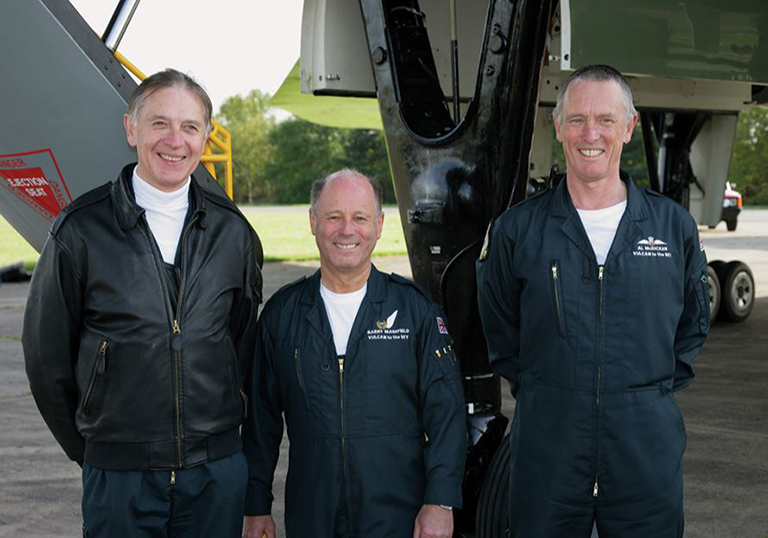
Ramblings from the AEO’s Panel – Part 26
Barry Masefield was the Air Electronics Officer (AEO) for Vulcan XH558 and had flown in this iconic aircraft for over 30 years, also being a
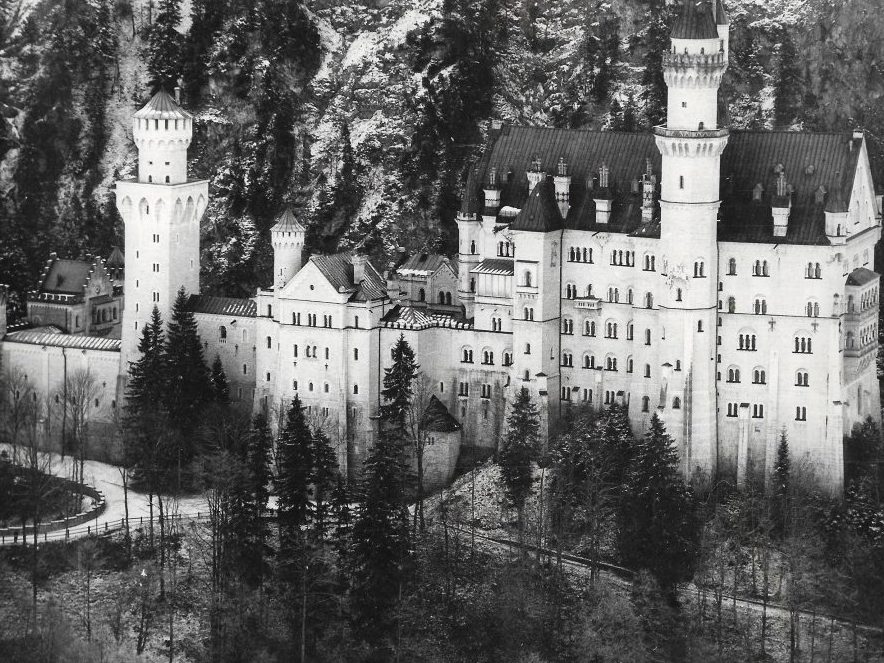
I had flown the Canberra B2 for three years before converting to the Photo Reconnaissance version in 1959. The difference from a three man B2 to a two man PR7 meant that the navigator was expected to do some of the activities of the Radar/Bomber-aimer.
The PR7 was fitted with seven cameras, one 48” mapping camera and six 52” oblique spying cameras for high level. For low level the front two cameras were replaced with two F95 oblique cameras operating at four and eight frames a second. They could also be used air to air.
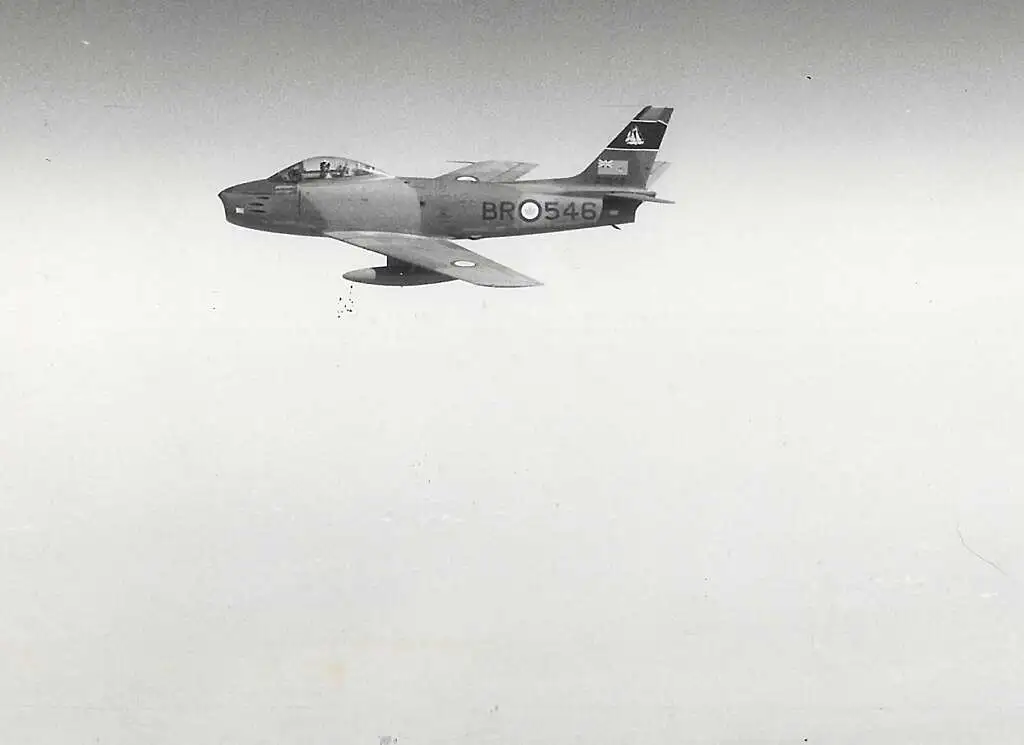
I arrived at 17 Squadron RAF Wildenrath from 231 OCU solo as a pilot had lost his navigator to a broken leg playing rugby. Our flight check with the CO was interesting as looking down from the nose I felt we were higher than normal, whereupon the CO said “let’s get down to operational height” that probably meant 100ft.
Like V-force we had QRA (Quick Reaction Alert), one crew member had to be on site. My pilot and many others lived in commandeered accommodation in Cologne, 50 Kms away, so that meant a night on base every now and again.
A requirement for all new crews was the winter survival course in southern Germany, near Oberammergau. The course was a week’s skiing (basic training given to we novices) followed by the weekend in the forest under survival conditions. The final week was back to skiing for those who passed the weekend. The year being 1960 meant that all the locals were skiing with beards and long hair, it being Passion year.
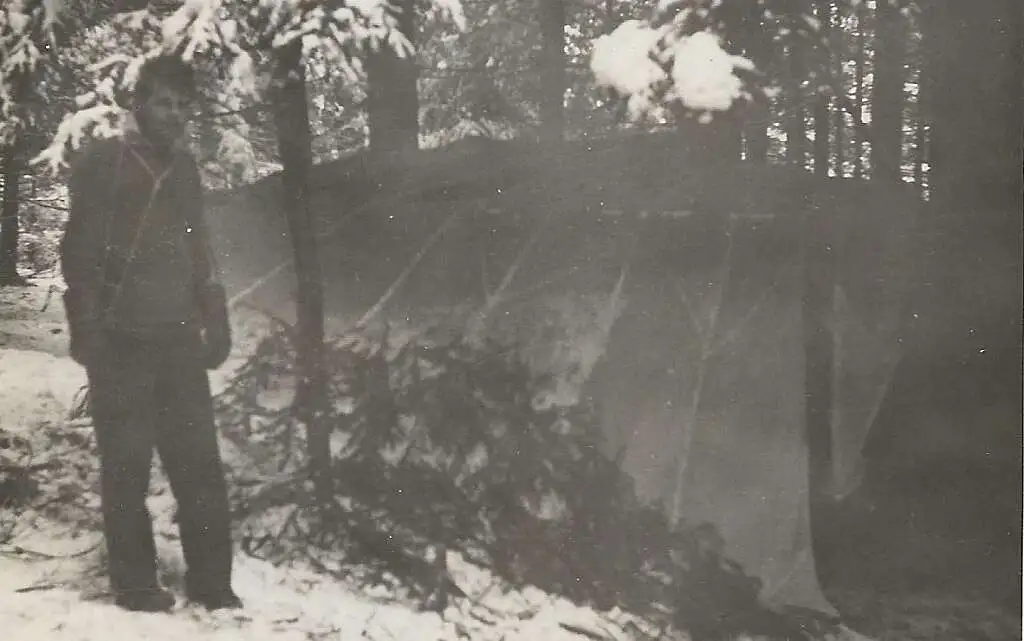
Daily Routine
We were at RAF Bruggen for a short period whilst work was being done at Wildenrath. One Saturday evening around 7 pm the quick train alert (QRA) sounded, What’s going on!!, we report to the Squadron and await for the Cologne contingent to arrive and briefed as to what was happening. At 9 o’clock the Station Commander arrived and thanked us for reacting, but it was meant for his (Bruggen) squadrons only. He was back a minute later asking for the fixing fural nut for his cars flag saying “I’m not fussed about the flag but the screw was difficult to replace, however the bars will remain open until 1 am.”
Our PR Canberras took a pasting at low level. One flight registered a 1G bump every 30 seconds, a 2G bump every two minutes and a 3G bump every 5 minutes. We cut the flight short as neither of us could take that movement.
One unusual flight was putting in a 48” oblique camera and flying at maximum height along the East German border. The height was at 40,000ft but the aircraft only just made the height. We were given two instruction, one said turn away, the second quickly. This was because we might have stirred up the hornets’ nest to the east.
There was a daily routine target for the Squadron and depending on what it was there was a scramble “yes please” or “not us”. One such “yes please” was a requirement to photograph the seals on Slyt beaches, right next door was nudist beach, we missed out. A later one was a small culvert near Northampton which when arrived found a massive road not marked on our charts. I later used this road (M1) going to Shawbury.
Other activities included night photography with photoflashes, colour film trials, and flying against the German army airfield defence force. The rules for this activity were maximum speed (450 knots) and minimum height (tree level), at that level navigation was nearly impossible and we considered ourselves invincible. In the afternoon we visited the German gunners and were surprised to see we were more vulnerable than we thought.
We experienced a couple of in-flight problems. We were on our way back from southern Germany and we heard a bang, couldn’t see anything, even with the periscopic sextant but thought it might be the top equipment hatch. We reported the problem to the tower, flew passed nothing seen. Landed and taxied to dispersal, the ground crew said nothing but on leaving the aircraft I saw the top hatch was missing. We had a fair idea where it was and the local army helicopter soon found it with all the securing bolts properly locked.
On a Friday trip to the UK our airbrakes decided not to retract which meant diversion to Leuchars with the prospect of a weekend in Fife. However the fighter squadron provided us with money and clothing such that we had a pleasant weekend at my pilot’s home town in Newcastle. Returned to Wildenrath late on Monday, via the Station Pembroke.
The more interesting flights
We found that we quickly became a senior crew and tended to please ourselves where we went, with the Rhine Gorge, German Alps and French Chateaus being favourites.

On one such sortie passing over the Black Forest we came upon a clearing where a rocket was being prepared, being nosey we took a photo which interested our PI’s (photo interpreters) as it was a Redstone missile, which was not supposed to be in Germany.
I had read that the French were building a Solar Furnace in the Pyrenees so off we went to see them, having flown all along the border saw nothing, but took a nice photo of Lourdes.
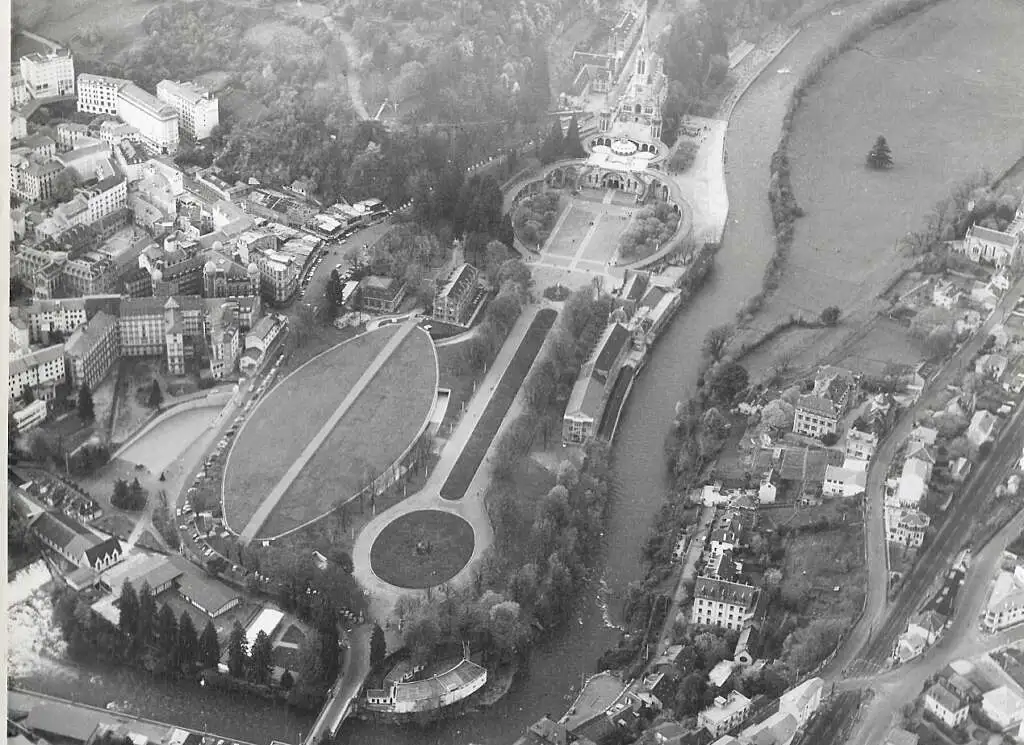
We tried a second time and again with the same result. It wasn’t until I had retired and was living in France and visited the site that I saw that it was not built till much later.
2ATAF was part of NATO and as such had a number of visits to other bases. When looking at my logbook I find a list of airfields visited. These include the usual Malta & Gibraltar, but also Gilza Rhein (Belgium), Rygge (Oslo), Copenhagen and Dijon.
We had a high-level sortie to Verona, which meant a five hour flight, up and down and across Italy. However if you are fully kitted ready to fly and the toilet calls, it is quite a palaver to undress from your flying kit, and air-vent suit to visit a French style toilet.
A trip to Stavanger also caused some difficulty. We took an Army officer with us but unfortunately on leaving the aircraft at Stavanger he pulled the wrong handle of his parachute, there are only two ejection seats in a PR aircraft and the Norwegian Air Force did not stock a replacement. On the flight home the poor army officer was having to carry his unfurled parachute with him. The flight back, at low level in bumpy conditions was unpleasant and I think he was pleased to get home.
N.A.T.O. Competitions
The major competition for 2ATAF was the Sassoon competition, comprising short, medium and long range aircraft, which also determined the 2ATAF representatives in the Royal Flush V competition, with the three highest crews in each section selected for Royal Flush. We were placed sixth in 1960, but with crew turnover we were the reserve crew.
Royal Flush 5
This was between the 2ATAF (RAF, Dutch and Belgians) and against 4ATAF (USA & French). As reserve crew we went to the French Air Force base at Bremgarten in the Black Forest for the workup. On such target took us to the Po valley and then into the Alps where after the target found ourselves short of fuel and therefore nipped across the Alps into Germany. The French know how to put on a show, their photos were high glossy and the Mess served wine with most meals. We were not required to fly in the competition. The French won the short range, whilst the Dutch/Belgian team won the medium range and we won the long range day.
The following year, Royal Flush 6, 17 Squadron were nominated for the long range competition flown from Beauvechain in Belgium this year the medium competition was between the Luftwaffe and the Dutch/Belgium crews. The Squadron again won the long range competition. The presentation was made by Prince Albert, and the ceremony ended with the usual reception, crews downstairs VIPs upstairs. We decided that we were VIPs and joined the reception.
The one disappointment of my happiest of tours came at the very end. We were allocated the first Ranger to Kenya. One of our Flight Commanders was tour-ex and he was coming with us. On the week we were due to go he could not make it. Our request to postpone it a week was approved BUT during that week the rail track between Mombasa and Nairobi was washed away as was our Ranger. It took me 30 years to reach Kenya.

Barry Masefield was the Air Electronics Officer (AEO) for Vulcan XH558 and had flown in this iconic aircraft for over 30 years, also being a
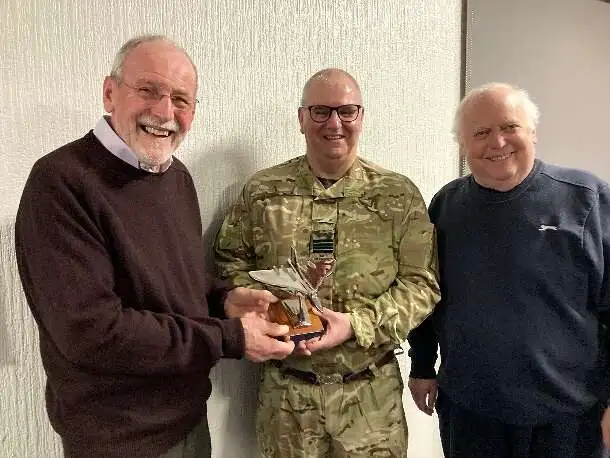
Thirty years ago whilst serving as Wing Commander Ops & Pilot Training Wing (OC OPTW) at RAF Finningley, the Air Training Corps (ATC) Detached Flight
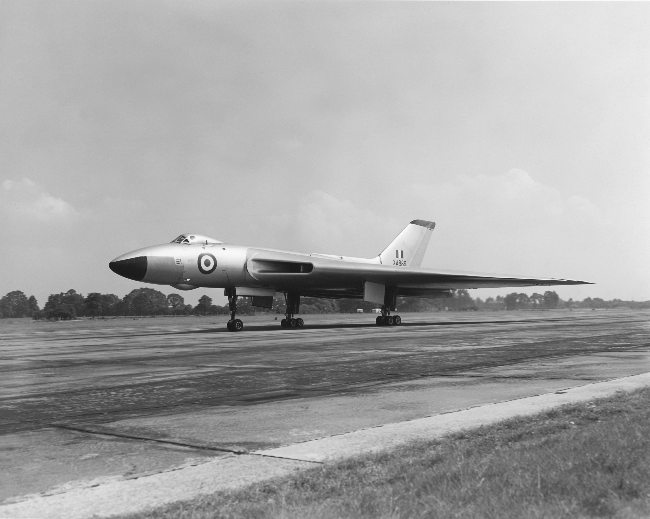
On 4 February 1955, the first production Vulcan B.1, XA889, made its maiden flight, flying with the original Vulcan wing design. In September 1955, Avro
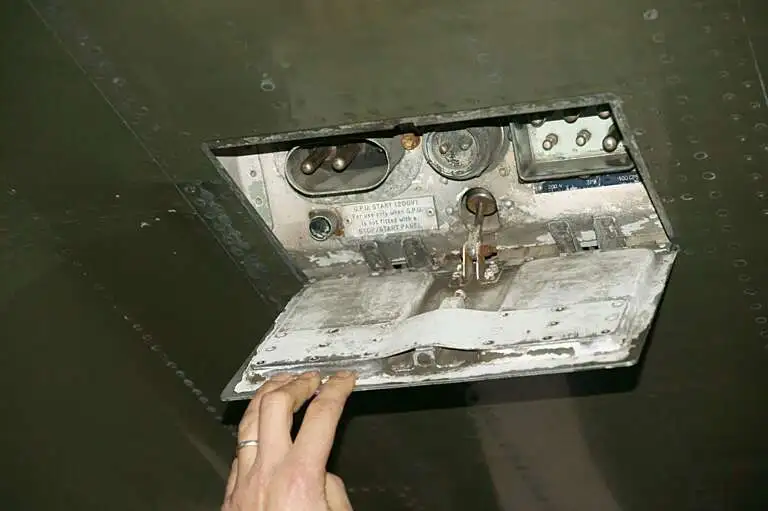
Recollections from Headquarters 1 Group RAF Bawtry Hall, RAF Finningley and the Bomber Box. Although I worked for the General Post Office (GPO) or BT